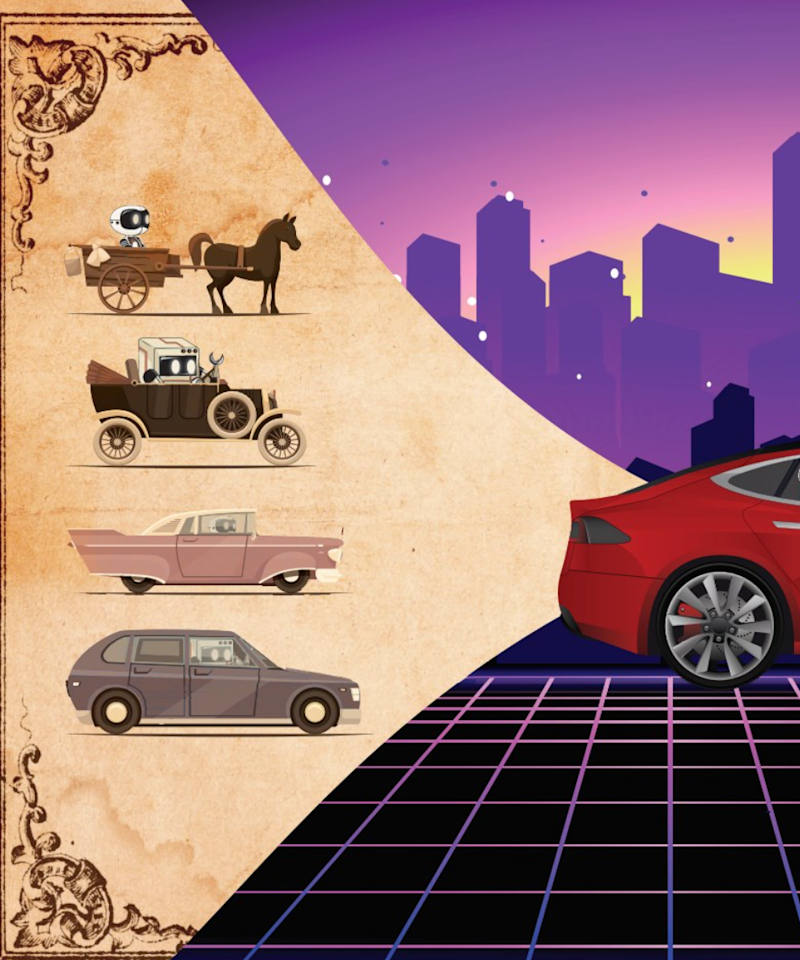"The greatest danger in times of turbulence is not the turbulence – it’s to act with yesterday’s logic." – Peter Drucker
The U.S. household appliance market – everything from washing machines to air conditioners, water heaters to refrigerators – had a valuation of some $55.3 billion in 2022. Certainly a big market that can’t be overlooked by anyone in manufacturing.
But then there’s another market of more than moderate interest: Automotive. In 2023, automotive has an estimated manufacturing market size of $104.1 billion, or nearly twice that of the household appliance segment.
While more than 99% of U.S. households have a refrigerator and “only” 92% have a motor vehicle, the average price of a new fridge is $1,500, and a new vehicle is over $48,000. Clearly the automotive market is important.
According to the Alliance for Automotive Innovation, a trade organization representing OEMs and suppliers in the United States:
For every dollar spent in vehicle manufacturing, an additional $3.45 of economic value is created.
More than $75 billion in U.S. investments have been announced by auto manufacturers (and let’s face it – the auto industry since 2021 has been dealing with the consequences of COVID and the chip shortage).
Vehicle and parts manufacturing accounts for 6% of all U.S. manufacturing and 11% of the durable goods manufacturing subsector.
All of this is prelude to the fact that, according to the U.S. Department of Energy, “Today’s [refrigerator] models have better insulation in the cabinets and sealing around the doors and they use more efficient compressor motors and new refrigerants.” And while everything from IoT capability to smudge-proof surfaces are available to refrigerators, the auto industry has embraced CASE (connected, automated, shared, electric), an acronym that pretty much characterizes why there is over $75 billion in investment.
Arguably, the home appliance industry's products and processes are undergoing improvements.
The automotive industry is undergoing disruption.
To get a sense of the magnitude of the changes, consider this:
In 1876 the first four-stroke gasoline automotive engine was invented, and 10 years later, in 1886, Carl Benz began commercial production.
The 1901 Model C Packard featured a steering wheel rather than a tiller to control the direction of the wheels.
And now the internal combustion engine (ICE) is giving way to the electric motor. General Motors has petitioned the National Highway Traffic Safety Administration for the ability to mass produce Cruise Origin AV vehicles without steering wheels.
Suddenly an entire industry – OEMs as well as suppliers – is facing changes to what it’s been doing for more than a century.
Or more to the point: They have the choice to face those changes or pretend they are not happening. And suffer the consequences.
So, while the focus here is on the auto industry and the situation that it finds itself in – a situation unlike any other time in its history – the purpose is to use this as an example – an extreme one, perhaps – of what is being faced by manufacturers in industries across the board.
Your industry may not have its Tesla.
Yet.


The Cruise Origin is electric and autonomous. It currently offers driverless rides in San Francisco, Phoenix, and Austin. General Motors, which owns Cruise, has petitioned the National Highway Traffic Safety Administration to permit the building of Origin vehicles without things like steering wheels because there is no driver involved in the operation of the vehicle. That’s disruption. (Image: Cruise)
Consequences of Disruptions
Paul Eichenberg, a consultant who focuses on strategic, operational, and systems issues, points out that the auto industry over the past few decades has been focused on lean manufacturing and asking: How do we make what we make better?
While that was certainly beneficial for companies – after all, it was how they were able to make money – it is no longer sufficient given that, in the past few years, Tesla has disrupted not only products but processes as it has led the way for mass-produced electric vehicles, driving the transition being made by the major players in the industry, which has had profound consequences on production.
Consider, for example, forgings. Eichenberg says that this is a roughly $90-billion global industry.
But ICEs account for about half that, and the remaining markets really have no high-volume applications – at least not automotive-style volume.


Yes, the GE Appliances Café 4-Door French-Door Refrigerator features built-in Wi-Fi and works with the company’s SmartHQ app, but fundamentally the advances in refrigerators have been predicated on change, not disruption: An internet-enabled refrigerator is still a refrigerator. But an Internet-enabled vehicle, while still a mode of transportation, conceivably becomes something that drives rather than something that’s driven. That’s disruption. (Image: GE Appliances)
A given forging company, Eichenberg suggests, may have become one of the best in the world, fully embracing lean, and is operating presses 24/7, providing parts, say, to General Motors. And it has developed a highly efficient business model to do so. Things are good. Or seem good.
“What happens when the reason for that business model no longer exists?” Eichenberg asks. What happens when ICE volumes decline – and they are declining.
Or consider wiring harness manufacturers.
Eichenberg notes the original Tesla Model S has some 3 kilometers of wiring in its harness – and the Model Y has about 100 meters.
While that may provoke nothing more than a shrug and an excuse (e.g., “We don’t supply Tesla.”), he points out that Ford and General Motors are pursuing the same approach. If this approach to minimization becomes more prevalent in other components, then there is an issue for those beyond wiring.
“What happens …?”
And then there are the so-called gigacastings Telsa is employing to create front and rear underbody structures (and will likely be using to create an entire underbody for a forthcoming smaller vehicle). These parts are produced with large high-pressure aluminum die casting machines – as in 6,000 tons and greater.
These large castings eliminate the need for literally hundreds of stamped parts as well as everything that goes with assembling those stampings into larger structural components. (If you’re in the stamping, tooling, welding, or associated business, consider the implications.)
Eichenberg acknowledges that there is certainly plenty of casting expertise in the auto industry today. But the casting equipment is a fraction of the size of that being used to produce gigacastings, and to make the transition would be costly. In a situation where money is hard to get, this change may be hard to make.
Eichenberg points out that other OEMs are pursuing their versions of gigacastings, so this is something that will become a trend, not a fad – something that is going to become more of the norm. And that norm will have a tremendous impact on entire sectors, with some seeing their business diminish and others growing.
For example, for the admittedly low-volume forthcoming Cadillac CELESTIQ, GM is building the underbody with six precision sand-cast aluminum components, each of which will cut stamped part count by 30 to 40 components – or from 180 to 240 stampings per vehicle.
“What happens …?”
Consider companies that had done solid business chrome plating plastic grilles. There is no grille on a Model Y. Nor are there grilles on the Mustang Mach-E or the Chevy Bolt. And those EVs that continue to have a grille – like the BMW i7 – don’t have a shiny one, Eichenberg says, because the chrome signifies old tech.
“What happens …?”


This suite of vehicles from Tesla has had a disruptive effect on the global auto industry. Initially global OEMs pooh-poohed the Model S when it appeared in 2012. Now there isn’t a company that isn’t trying to replicate what Tesla is doing, both in terms of product and process. During the first six months of 2023, according to S&P Global Mobility figures, Tesla sold 325,291 vehicles in the United States. That is more than the next 19 OEMs – including GM, Ford, Mercedes, and VW – combined. That’s disruption. (Image: Tesla)
So, What Do You Do?
There is a theory in biology named “punctuated equilibrium.” It argues that there are times when evolution goes from being fairly stable to a sudden change.
Arguably we are in a state of punctuated equilibrium, one that started on June 22, 2012, when the Tesla Model S was introduced.
What can be done to handle these changes – or benefit from them?
Laurie Harbour, president and CEO of Harbour Results, a consultancy that focuses on manufacturing, operations, and strategic management, says there are several things that manufacturing facilities can do: “Flexibility is the most critical piece, the ability to react to the unexpected.”
She says leading companies her team works with are investing 8% to 10% capex on automation and software technology. The first is helping manage labor. The latter is providing a means by which they can do better planning – and planning based on data is something that Harbour says is essential.
But planning goes beyond keeping the factory floor operating at an optimal tempo; it includes determining what other things can be done. She suggests that managers need to have staff – whether internal or external – who can assess what alternative industries are good fits for the company’s capabilities.
Dave Andrea, principal on the Plante Moran automotive strategy team, focuses on suppliers and manufacturing and agrees about the need for companies to look to other industries, something that may be completely foreign to them: “Auto is so large that companies have not needed to create relationships with other sectors.”
However, there is one group that a company can leverage in terms of looking for new technologies, prospects, and suppliers: the board of directors. Generally these board members have external visibility that is otherwise limited – or lacking – within a company.
Andrea suggests that just as companies have advanced engineering staffs, they should create something of an advanced purchasing activity that will look at new suppliers that can address new customer requirements.
But both Harbour and Andrea point out that automotive has historically been such a big part of the business for any given company that replacing that volume will be difficult to say the least.
And both Harbour and Eichenberg say that there are some company owners and executives – even at companies making fuel systems for ICEs – who don’t want to acknowledge that things are changing. It is easier for them – for now – to ignore it.
Eichenberg suggests that the auto industry is in a cycle of disruption that will last for the next 20 years. Companies that have a three-year planning window are not going to see what’s on the horizon for them. Or possibly even what they’re in the midst of.
Again: You may not have a buck’s worth of business with automotive. But you can count on disruption sooner rather than later.
Then ask yourself:
“What happens …?”
Dealing With Disruption
“We define disruption as the displacement of businesses, markets, and value networks as the result of economic, societal, environmental, political, regulatory, or technological changes. Technological innovations can, in addition, serve as catalysts to accelerate other disruptive forces.” – AlixPartners
Dan Hearsch, a partner and managing director who has a specialization in manufacturing operations with AlixPartners, a global management consulting firm, says disruption puts organizations out of their normal operating environments, and an issue that it causes, or is characterized by, is a high level of unpredictability.
While changes are simply characteristic of the way things occur, Hearsch says there is a marked acceleration of change, and it’s happening in unexpected ways that are challenging industries across the globe.
He uses an example from the pandemic that may seem trivial but is really to the point: the run on toilet paper. Did Procter & Gamble or Kimberly Clark see that coming?
That simple circumstance made it clear how the supply chain has a level of fragility.
Of course, on a more “professional” level, there was the chip shortage, which, Hearsch says, continues to resonate today and has necessitated a rethink of sourcing, inventories, and internal capabilities.
Primary factors contributing to disruption include:
Regulations
Economic conditions
Technological developments
Environmental, social, and governance issues
Employees
In a global survey of 3,000 executives within the categories of Aerospace & Defense, Automotive, Consumer Products, Energy & Power Generation, Financial Services, Healthcare & Life Sciences, Media & Entertainment, Retail, Technology, Telecom & Cable, AlixPartners found that 98% of companies are now changing or expect to change their business models in the next three years to address disruption.
That said, 85% say they are finding it increasingly difficult to know how to start dealing with disruption – and 70% of the CEOs are worried about their jobs as a result of disruption.
To read the rest of the Economics Issue of MT Magazine, click here.





